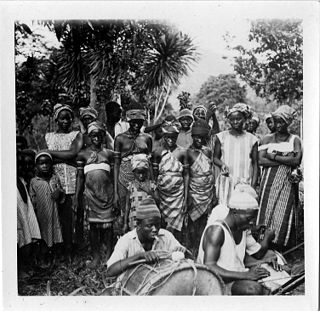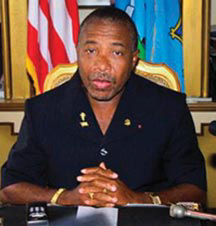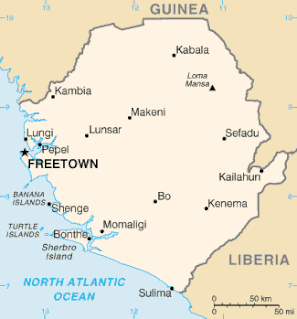Gendema is a rural town in Pujehun District in the Southern Province of Sierra Leone. Gendema lies in the far Southern part of Sierra Leone, on the international border with the Republic of Liberia. [1] [2] [3]

Pujehun District is a district in the Southern Province of Sierra Leone. Its capital is the town of Pujehun. The other major towns in the district include Gandorhun, Zimmi, Gendema, Masam, Bomi and Potoru. As of 2015, the district has a population of 345,577. The population of Pujehun District is largely from the Mende ethnic group; and the district is predominantly Muslim.

The Southern Province is one of the four provinces of Sierra Leone. It covers an area of 19,694 km² and has a population of 1,438,572. It consists of four districts. Its capital and administrative center is Bo, which is also the second largest and second most populated city in Sierra Leone after the nation's capital Freetown. The population of the southern province is largely from the Mende ethnic group.

Sierra Leone, officially the Republic of Sierra Leone, informally Salone, is a country on the southwest coast of West Africa. It has a tropical climate, with a diverse environment ranging from savanna to rainforests. The country has a total area of 71,740 km2 (27,699 sq mi) and a population of 7,075,641 as of the 2015 census. Sierra Leone is a constitutional republic with a directly elected president and a unicameral legislature. The country's capital and largest city is Freetown. Sierra Leone is made up of five administrative regions: the Northern Province, North West Province, Eastern Province, Southern Province and the Western Area. These regions are subdivided into sixteen districts.
Gendema is the chieftaincy seat of Soro Gbema Chiefdom [3] and is a trading center between Sierra Leoneans and Liberians across the border. The principal inhabitants of gendema are the Mende, Vai and Kissi people.
Soro Gbema is a chiefdom in Pujehun District of Sierra Leone with a population of 31,977. Its principal town is Fairo.

The Mende people are one of the two largest ethnic groups in Sierra Leone; their neighbours, the Temne people, have roughly the same population. The Mende and Temne each account for slightly more than 30% of the total population. The Mende are predominantly found in the Southern Province and the Eastern Province, while the Temne are found primarily in the Northern Province and the Western Area, including the capital city of Freetown. Some of the major cities with significant Mende populations include Bo, Kenema, Kailahun, and Moyamba.

The Vai are a Manden ethnic group that live mostly in Liberia, with a small minority living in south-eastern Sierra Leone. The Vai are known for their indigenous syllabic writing system known as Vai syllabary, developed in the 1820s by Momolu Duwalu Bukele and other tribal elders. Over the course of the 19th century, literacy in the writing system became widespread. Its use declined over the 20th century, but modern computer technology may enable a revival.














